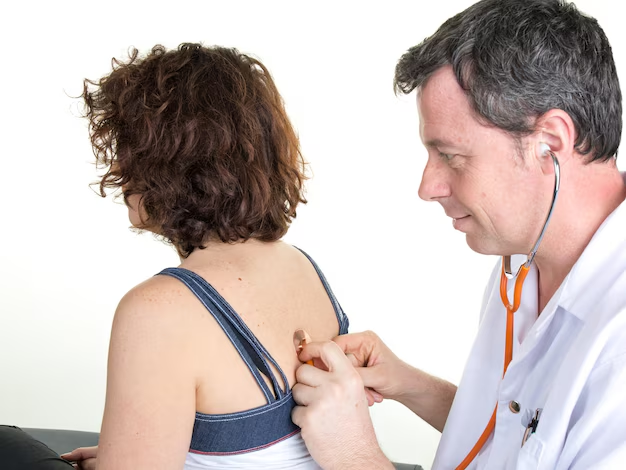Understanding Shingles: What You Need to Know
Imagine waking up to a rash that's both painful and alarming, accompanied by a burning sensation that doesn't seem to subsist. Could it be something serious, or just an allergy? What if this uncomfortable feeling persists or even worsens? For many, these symptoms might sound like a nightmare, but they are common in the condition known as shingles. Let's delve into this perplexing ailment to better understand what shingles is, how it affects the body, and how you can manage its disruptive presence in your life.
What is Shingles?
Shingles, medically known as herpes zoster, is an infection caused by the varicella-zoster virus, the same virus responsible for chickenpox. Anyone who has had chickenpox can develop shingles. While chickenpox primarily affects children and manifests as an itchy rash, the virus remains dormant in the body's nerve tissues even after recovery. Shingles occurs when this dormant virus reactivates, typically many years later, resulting in a painful skin rash.
Key Characteristics of Shingles
- Rash Development: The rash usually appears as a band or a strip on one side of the body and is often accompanied by blister-like lesions.
- Pain: This is often the first symptom of shingles. The pain can be intense and is sometimes mistaken for other conditions affecting the organs in the vicinity.
- Duration: Without treatment, shingles can last between two to four weeks.
- Postherpetic Neuralgia: This is a complication where pain persists even after the rash has cleared, due to nerve damage incurred by the virus.
Who is at Risk?
While shingles can affect anyone who has had chickenpox, certain groups are at a higher risk:
- Older Adults: The likelihood of developing shingles increases with age, particularly in individuals over the age of 50.
- Weakened Immune System: Conditions or medications that weaken the immune system can increase your risk.
- Stress and Trauma: High stress levels or physical trauma can trigger an outbreak.
Preventive Measures
- Vaccination: A shingles vaccine, recommended for adults over 50, can reduce the risk and severity of shingles.
- Healthy Lifestyle: Maintaining a robust immune system through good nutrition, regular exercise, and stress management can lower your chances of an outbreak.
Symptoms to Watch For
Recognizing the symptoms of shingles early can make a significant difference in managing the condition effectively.
Initial Symptoms
- Pain and Burning: Focused in a localized area, commonly on the torso or face.
- Tingling Sensation: Preceding the rash, often signaling the onset of an outbreak.
- General Discomfort: Many experience flu-like symptoms without a fever, including sensitivity to light and fatigue.
Rash and Lesion Formation
- Timeline: Appears within a few days after the initial symptoms.
- Appearance: Clusters of red blisters that eventually scab over.
- Sensations: Itching accompanies the pain as the rash develops.
How is Shingles Diagnosed?
A diagnosis usually involves a physical examination by a healthcare professional, often supplemented by patient history focusing on previous chickenpox infection and symptom description. In uncertain cases, laboratory tests can confirm the presence of the varicella-zoster virus through culture or DNA testing of the lesion samples.
Shingles vs. Other Skin Conditions
It's crucial to differentiate shingles from other skin ailments:
- Herpes Simplex: Creates similar lesions, mainly near the mouth or genitals, but tends to be recurring and is caused by a different virus.
- Contact Dermatitis: An inflammatory skin reaction, usually from allergens or irritants, characterized by itchy and red skin but without nerve pain.
- Eczema: Chronic with a tendency to flare up, presenting as itchy, inflamed skin.
Understanding Treatment Options
Managing shingles revolves around easing pain, reducing complications, and hastening recovery.
Antiviral Medications
- Purpose: Essential to shorten the duration and severity of an outbreak.
- Timing: Most effective when started within 72 hours of the rash appearing.
Pain Management
- Analgesics: Over-the-counter or prescribed pain relief options can help manage discomfort.
- Topical Treatments: Capsaicin cream or lidocaine patches can be used to relieve pain.
Home Remedies and Lifestyle Changes
- Cold Compresses: Can soothe the skin and relieve itching.
- Rest and Recovery: Adequate sleep and reducing stress levels can support healing.
Complications and Long-Term Effects
Understanding potential complications can help in early intervention:
- Postherpetic Neuralgia (PHN): Persistent nerve pain that can last long after the visible symptoms are gone.
- Vision Impairment: If the rash occurs near or in the eyes, it could lead to serious vision issues.
- Neurological Problems: In rare cases, shingles might lead to inflammation of the brain or facial paralysis.
Everyday Impact and Coping Mechanisms
Living with shingles can be challenging, especially when it affects daily activities. Here are some strategies to cope:
- Educational Awareness: Knowing more about your condition can help you anticipate challenges and plan accordingly.
- Support Networks: Engage with support groups, whether in-person or online, to share experiences and gain emotional backing.
- Boundary Setting: Understand and acknowledge your limitations, prioritizing activities that support wellness and comfort.
Take Charge of Your Health
Awareness and proactive measures play a vital role in shingle prevention and management. From scheduled vaccinations to lifestyle choices that bolster the immune system, individuals can significantly mitigate the impact of shingles.
Reflecting on this intricate condition, you'll discover that while shingles may present an unwelcome interruption, understanding its origins, risks, and management strategies equip you with a powerful arsenal against it.
🔍 Quick Summary with Practical Insights
- Watch for Symptoms 📌: Be alert to early signs like pain and tingling in a localized area.
- Get Vaccinated 💉: Recommended for adults 50+ to reduce risk.
- Seek Early Treatment ⏰: Antivirals are most effective within 72 hours of rash onset.
- Manage Stress 🧘♂️: Stress reduction can prevent outbreaks.
- Stay Informed 📚: Knowledge empowers proactive management and minimizes anxiety.
Remember, although shingles can be distressing, understanding the condition and its impacts gives you the power to face it head-on with confidence and clarity.
